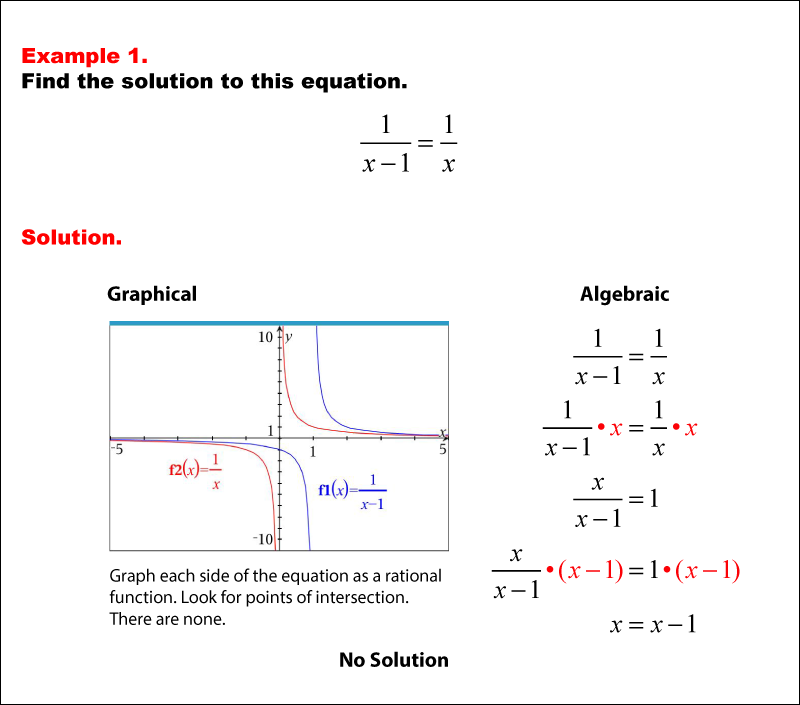
Display Title
Math Example--Solving Equations--Extraneous Or No Solutions--Example 1
Display Title
Extraneous Or No Solutions--Example 1

Topic
Equations
Description
This example explores an equation that yields no solution. The equation involves rational expressions, which often leads to potential extraneous solutions. To solve such equations, multply both sides of the equations by the expressions in the denominator. However, this process can introduce extraneous solutions that satisfy the squared equation but not the original one. It's crucial to check any solutions obtained by substituting them back into the original equation. This verification step is essential because squaring both sides can sometimes introduce solutions that don't satisfy the original equation. The example likely demonstrates how to identify and eliminate these extraneous solutions, emphasizing the importance of this final check in the problem-solving process.
For a complete collection of math examples related to Solving Equations with Extraneous or No Solutions click on this link: Math Examples: Solving Equations with Extraneous or No Solutions Collection.
| Common Core Standards | CCSS.MATH.CONTENT.HSA.REI.A.2 |
|---|---|
| Grade Range | 9 - 12 |
| Curriculum Nodes |
Algebra • Radical Expressions and Functions • Radical Functions and Equations • Rational Expressions and Functions • Rational Functions and Equations |
| Copyright Year | 2020 |
| Keywords | extraneous solutions |